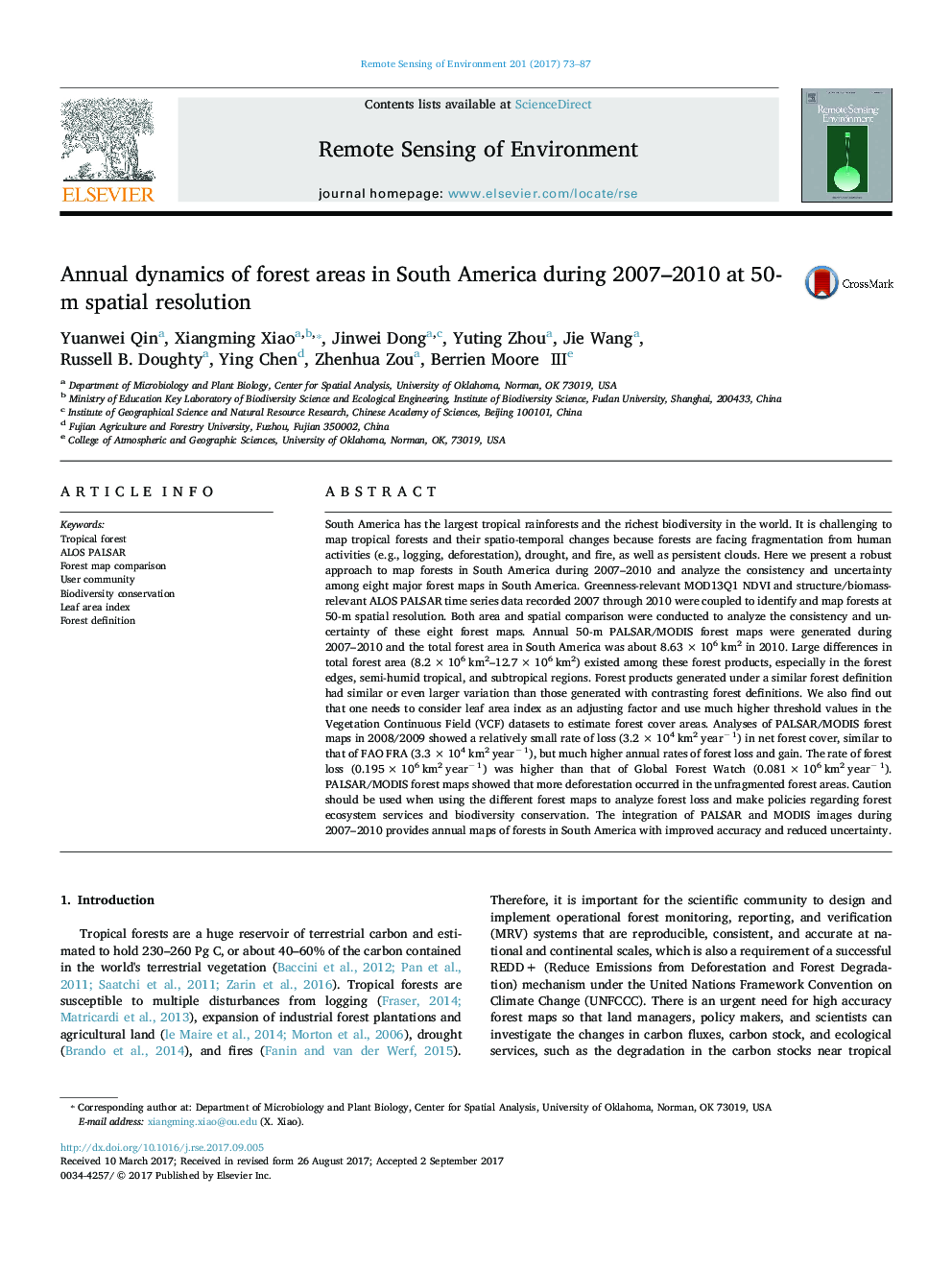| Article ID | Journal | Published Year | Pages | File Type |
|---|---|---|---|---|
| 5754657 | Remote Sensing of Environment | 2017 | 15 Pages |
Abstract
South America has the largest tropical rainforests and the richest biodiversity in the world. It is challenging to map tropical forests and their spatio-temporal changes because forests are facing fragmentation from human activities (e.g., logging, deforestation), drought, and fire, as well as persistent clouds. Here we present a robust approach to map forests in South America during 2007-2010 and analyze the consistency and uncertainty among eight major forest maps in South America. Greenness-relevant MOD13Q1 NDVI and structure/biomass-relevant ALOS PALSAR time series data recorded 2007 through 2010 were coupled to identify and map forests at 50-m spatial resolution. Both area and spatial comparison were conducted to analyze the consistency and uncertainty of these eight forest maps. Annual 50-m PALSAR/MODIS forest maps were generated during 2007-2010 and the total forest area in South America was about 8.63 Ã 106 km2 in 2010. Large differences in total forest area (8.2 Ã 106 km2-12.7 Ã 106 km2) existed among these forest products, especially in the forest edges, semi-humid tropical, and subtropical regions. Forest products generated under a similar forest definition had similar or even larger variation than those generated with contrasting forest definitions. We also find out that one needs to consider leaf area index as an adjusting factor and use much higher threshold values in the Vegetation Continuous Field (VCF) datasets to estimate forest cover areas. Analyses of PALSAR/MODIS forest maps in 2008/2009 showed a relatively small rate of loss (3.2 Ã 104 km2 yearâ 1) in net forest cover, similar to that of FAO FRA (3.3 Ã 104 km2 yearâ 1), but much higher annual rates of forest loss and gain. The rate of forest loss (0.195 Ã 106 km2 yearâ 1) was higher than that of Global Forest Watch (0.081 Ã 106 km2 yearâ 1). PALSAR/MODIS forest maps showed that more deforestation occurred in the unfragmented forest areas. Caution should be used when using the different forest maps to analyze forest loss and make policies regarding forest ecosystem services and biodiversity conservation. The integration of PALSAR and MODIS images during 2007-2010 provides annual maps of forests in South America with improved accuracy and reduced uncertainty.
Related Topics
Physical Sciences and Engineering
Earth and Planetary Sciences
Computers in Earth Sciences
Authors
Yuanwei Qin, Xiangming Xiao, Jinwei Dong, Yuting Zhou, Jie Wang, Russell B. Doughty, Ying Chen, Zhenhua Zou, Berrien III,
